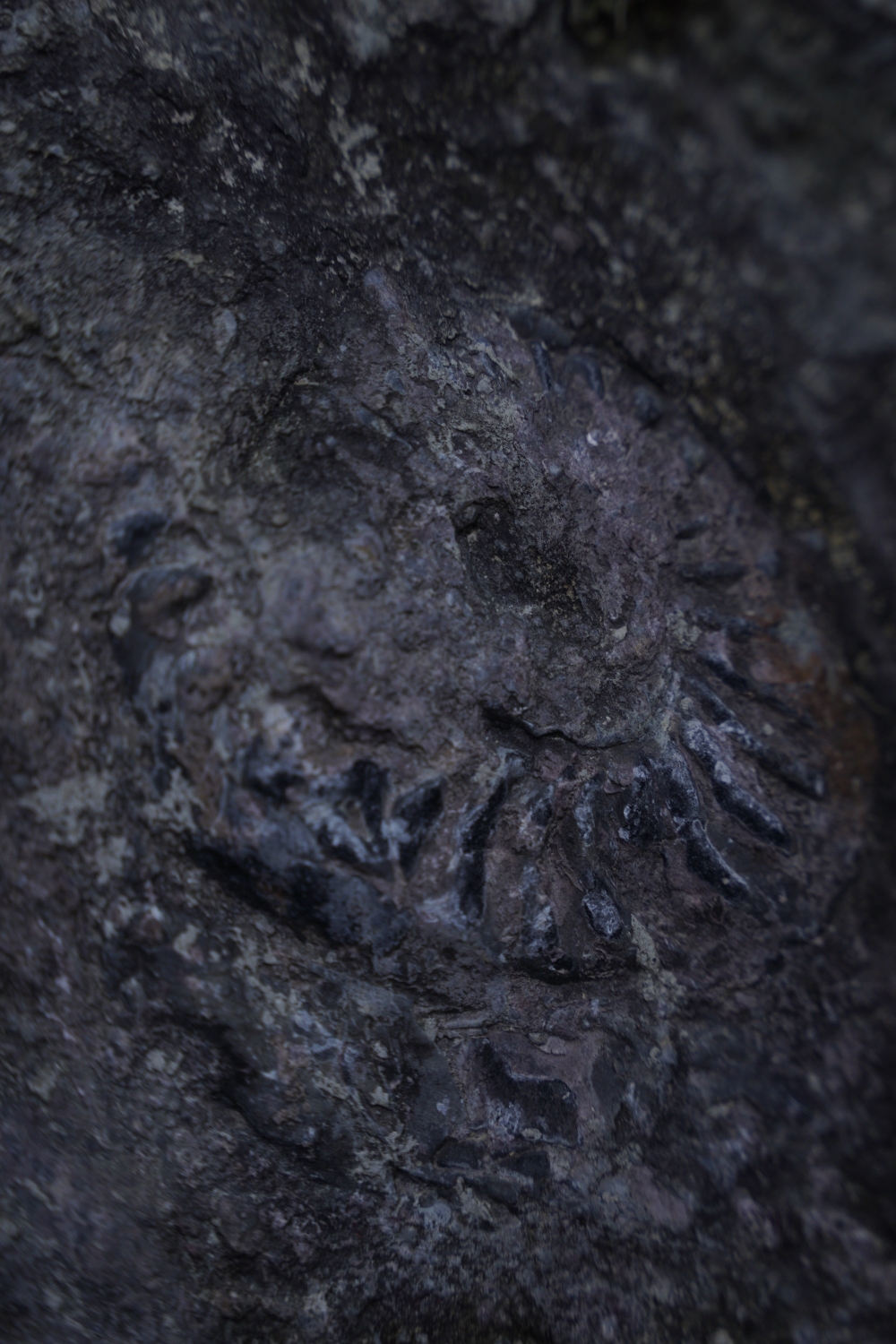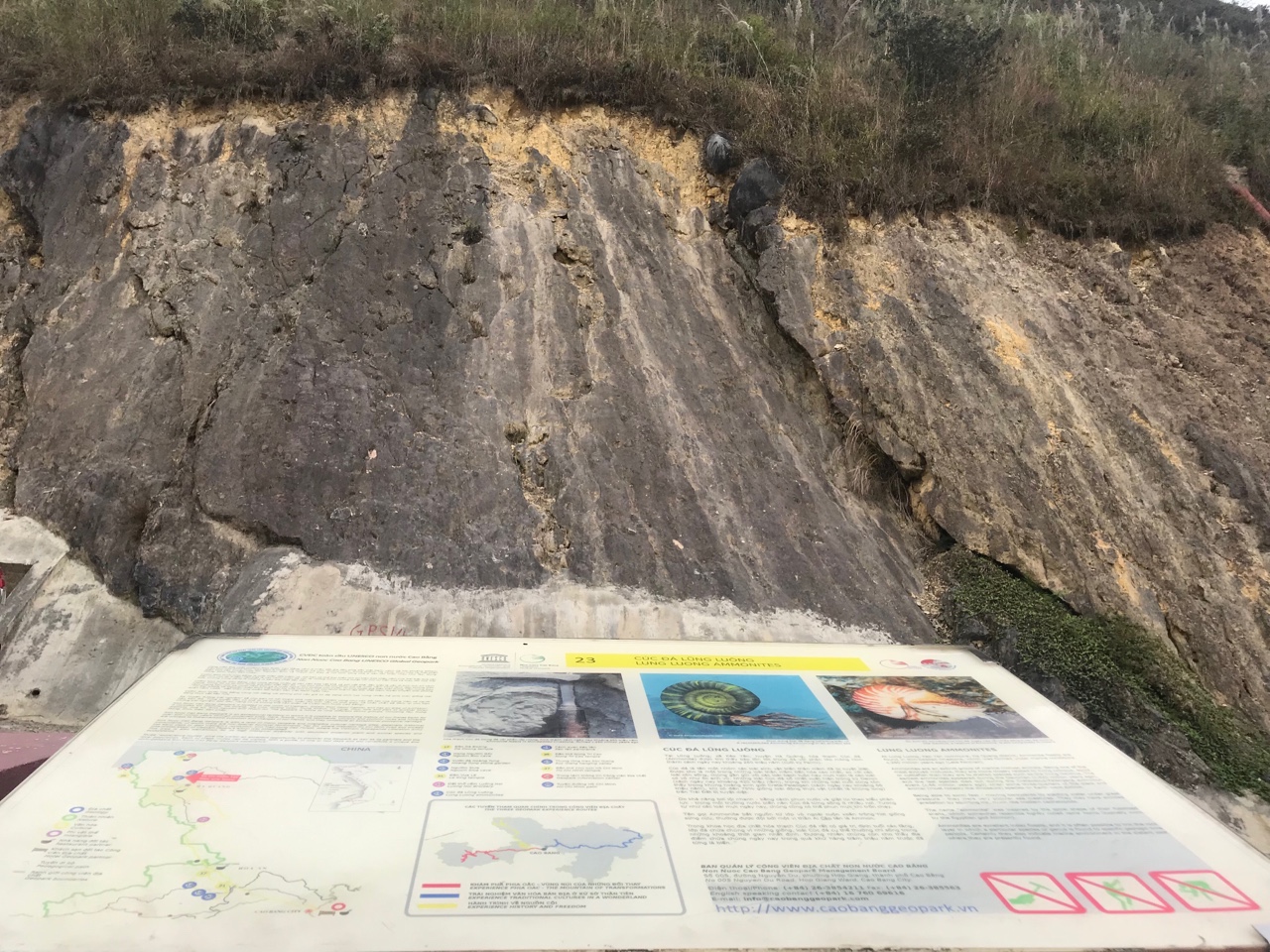LUNG LUONG AMMONITES


At Lung Luong, Keo Yen commune, Ha Quang district, Ammonite fossils are found in thin-bedded limestone of the so-called Dong Dang Formation (P3đđ) (Late Permian, c.260 million years ago).
Ammonites are an extinct group of marine mollusc animals in the subclass Ammonoidea, class Cephalopoda, phylum Mollusca. Being one of the most evolved molluscs in the same phylum, they are more closely related to living coleoids (e.g. octopuses, squid and cuttlefish) than they are to shelled nautiloids (e.g. the living Nautilus species). The earliest ammonites appeared during the Devonian (c.420 million years ago), and the last species died out during the Cretaceous-Paleogene extinction event (c.66 million years ago) when some three-quarters of the plant and animal species on Earth went extinct.
Being able to swim fast - moving backwards by ejecting water under great pressure - they were very popular sea creatures. They may have avoided predation by squirting ink, much like modern cephalopods
The name "ammonite" was inspired by the spiral shape of their fossilized shells, which somewhat resemble tightly coiled rams' horns (typically worn by the Egyptian god Ammon).
Ammonites are excellent index fossils, and it is often possible to link the rock layer in which a particular species or genus is found to specific geologic time periods. Certainly they also indicate marine environment in the distant past where they are presently found.
Reader Comments
Newer articles
Older articles


